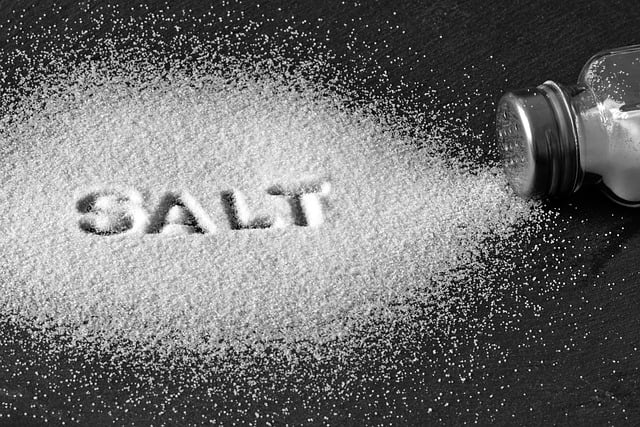Thiazide diuretics are commonly prescribed medications used to treat hypertension, edema, heart failure, and ascites. They work by removing excess salt and water from the body through the urine. This ultimately helps to reduce fluid retention and decrease blood pressure. Thiazide diuretics are generally safe with adequate monitoring in place but can cause significant harm when combined with certain medications. Below are my top 5 drug thiazide drug interactions that all healthcare providers should be aware of.
Nephrotoxic Medications
Thiazide diuretics on their own can be nephrotoxic and have the potential to cause an AKI by reducing blood flow to the kidneys. Combining diuretics with nephrotoxic agents such as aminoglycosides, amphotericin B, ACEis, ARBs, or NSAIDs can have an additive nephrotoxic effect and can further increase the risk of kidney damage and AKI. Maintaining adequate hydration is crucial in preventing an AKI when using a combination of these medications. This can be a challenging balance in patients with fluid restrictions due to CHF. Additionally, close monitoring of kidney function is essential when using diuretics alongside nephrotoxic agents for early detection of AKI and making necessary adjustments.
Hypokalemia
It is well known that thiazide diuretics deplete potassium levels. The risk for hypokalemia can be exacerbated by other medications. The most common risk is with another type of diuretic called a loop diuretic (i.e. furosemide, torsemide, etc.). When loops are added on top of a thiazide, profound hypokalemia can result. This is a primary reason why a BMP (which includes potassium) is typically drawn within a week or two of starting or increasing the dose of a loop or thiazide diuretic.
Digoxin
When digoxin is combined with a thiazide diuretic, the risk of digoxin toxicity increases. This thiazide-drug interaction is not completely understood, but likely involves hypokalemia and hypomagnesemia, common manifestations of thiazide diuretic use. If the use of both medications is required, frequent electrolyte and digoxin level monitoring is recommended to maintain digoxin within its narrow therapeutic window. While loop diuretics are typically considered to be a higher risk interaction with digoxin, thiazides also present a reasonable risk to pay attention to.
Medications Causing Hyponatremia
Sodium effects play an important role in thiazide diuretic interactions. Diuretics are notorious for depleting electrolytes, particularly loop and thiazide diuretics. When these diuretics are combined with medications that may cause low sodium levels, such as desmopressin and carbamazepine, the risk of developing hyponatremia increases greatly. Hyponatremia is a serious electrolyte imbalance that can result in seizures, delirium, coma, and death. Due to this heightened risk, desmopressin is contraindicated for use in patients also requiring loop diuretic therapy. Electrolyte monitoring is recommended when other sodium-lowering agents, such as carbamazepine, are used. SSRIs are also associated with hyponatremia and may be another medication class to be on the lookout for in combination with thiazide diuretics. These are all great medications pertaining to hyponatremia to remember when preparing for board exams 🙂
Lithium
Loop, thiazide, and potassium-sparing diuretics used in combination with lithium, all have the potential to increase the risk of lithium toxicity. The exact mechanism of this interaction is unknown, but thiazide diuretics appear to have the largest impact on increasing lithium levels. Lithium toxicity can present as acute or chronic toxicity, with symptoms including tremor, diarrhea, sedation, delirium, arrhythmias, seizures, and acute renal failure. When combining these medications, it’s important to start with low doses of lithium and slowly increase to avoid toxicity.
- 30 medication mistakes PDF
- 18+ Page Drug Interaction PDF
- 10 Commandments of Polypharmacy Webinar based on my experiences in clinical practice
This article “Thiazide Drug Interactions” was written by Kelly Chies, PharmD Candidate in collaboration with Eric Christianson, PharmD, BCPS, BCGP
Relevant Podcast Episodes:
References:
- Arumugham VB, Shahin MH. Therapeutic Uses of Diuretic Agents. [Updated 2023 May 29]. In: StatPearls [Internet]. Treasure Island (FL): StatPearls Publishing; 2025 Jan-. Available from: https://www.ncbi.nlm.nih.gov/books/NBK557838/
- Wang, Meng-Ting et al. “Risk of digoxin intoxication in heart failure patients exposed to digoxin-diuretic interactions: a population-based study.” British journal of clinical pharmacology vol. 70,2 (2010): 258-67.
- Finley PR. Drug Interactions with Lithium: An Update. Clin Pharmacokinet. 2016;55(8):925-941. doi:10.1007/s40262-016-0370-y
- Bumetanide. IBM Micromedex. IBM Watson Health, Greenwood Village, Colorado, USA. Available athttps://www-micromedexsolutions-com.ezp3.lib.umn.edu/micromedex2/librarian. Accessed: February 4, 2025.
- Hydrochlorothiazide. IBM Micromedex. IBM Watson Health, Greenwood Village, Colorado, USA. Available athttps://www-micromedexsolutions-com.ezp3.lib.umn.edu/micromedex2/librarian. Accessed: February 4, 2025.
- Spironolactone. IBM Micromedex. IBM Watson Health, Greenwood Village, Colorado, USA. Available athttps://www-micromedexsolutions-com.ezp3.lib.umn.edu/micromedex2/librarian. Accessed: February 4, 2025.



0 Comments